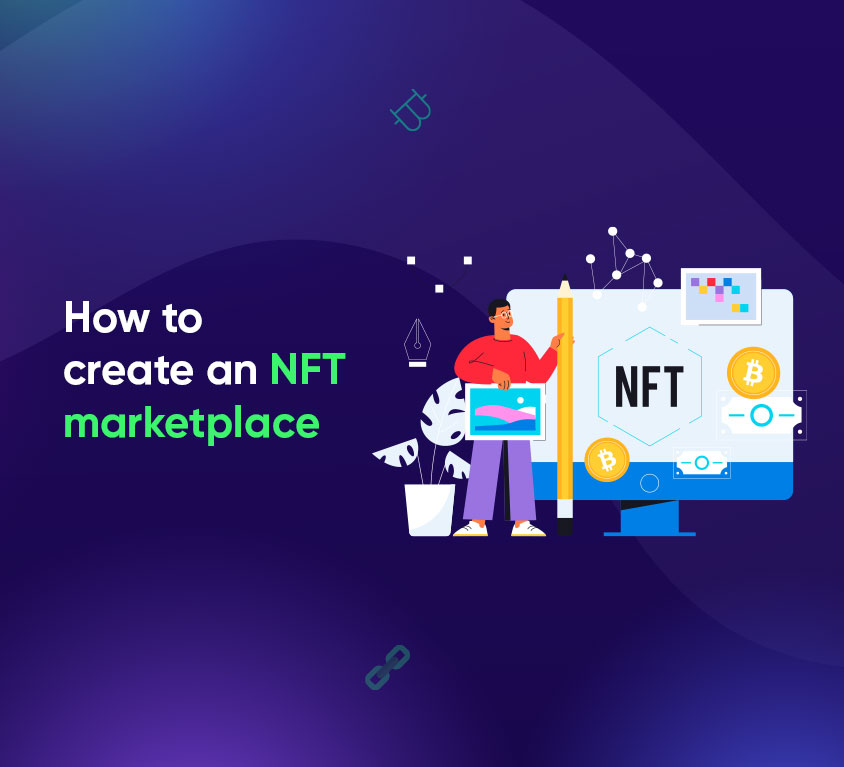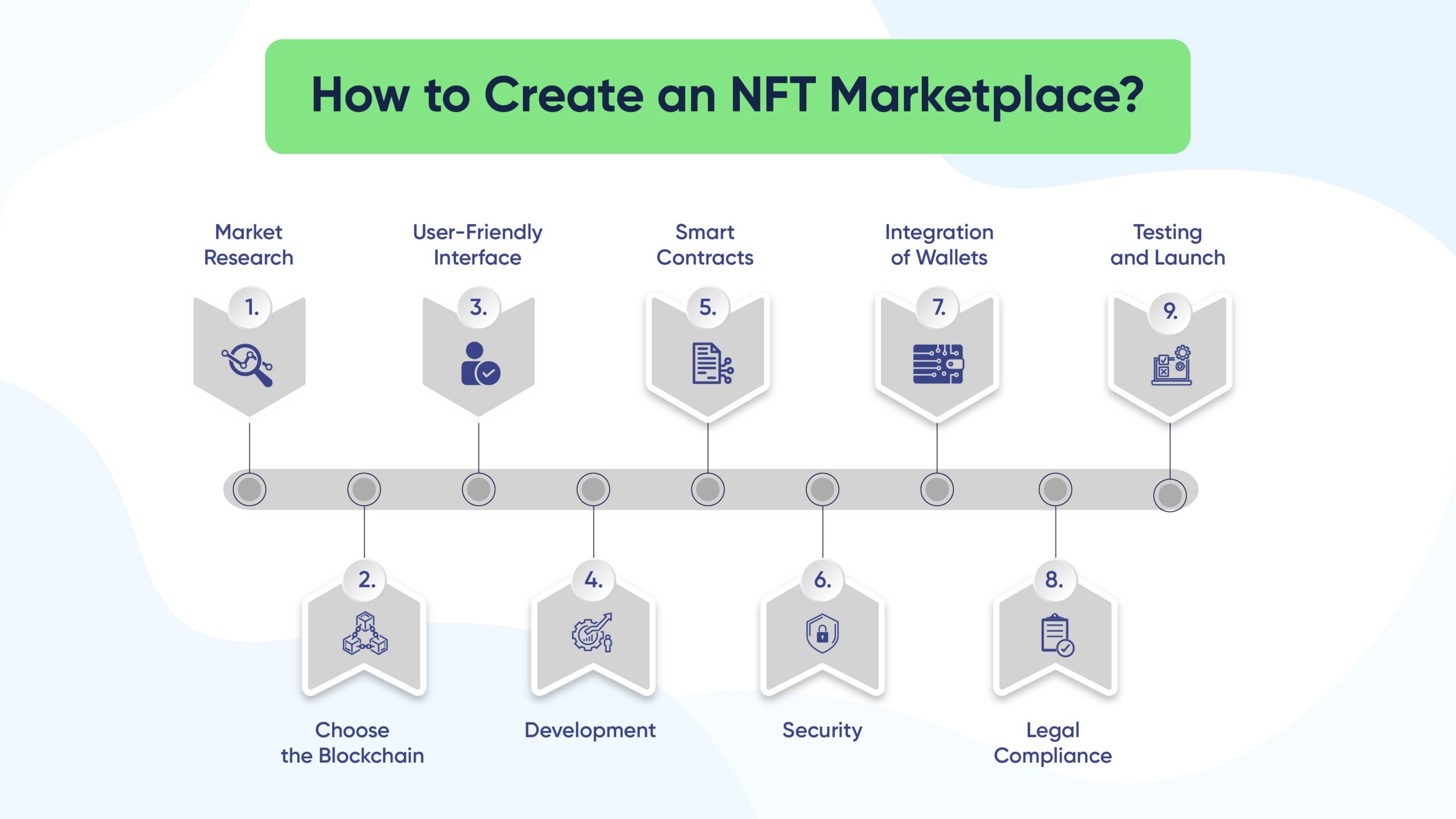
Introduction
Web3 & Blockchain Consultancy :
How to Create an NFT Marketplace? A Comprehensive Guide
Non-fungible tokens (NFTs) have taken the digital world by storm, revolutionizing the way we buy, sell, and trade unique digital assets. From digital art and music to virtual real estate and collectibles, NFTs have opened up new possibilities for creators and collectors alike. If you’re considering entering the world of NFTs and want to create your own marketplace, you’re in the right place. In this comprehensive guide, we’ll walk you through how to create an NFT marketplace. Whether you’re an entrepreneur looking to start a profitable venture or an artist seeking to showcase your work, understanding the process is crucial. Let’s dive in.What is the NFT Marketplace?
Key characteristics of an NFT Marketplace include:
- Minting: Users can create NFTs by “minting” them, which involves tokenizing a digital item or piece of content. During this process, metadata about the item is attached to the NFT, including details about the creator, ownership history, and any royalties to be paid to the creator upon resale.
- Listing and Trading: Creators and collectors can list their NFTs for sale on the marketplace. Buyers can browse listings, place bids, or make direct purchases. Once a transaction occurs, ownership of the NFT is transferred to the buyer, recorded on the blockchain, and reflected in their digital wallet.
- Royalties: Many NFT marketplaces support automatic royalty payments to creators every time their NFT is resold. This feature provides ongoing income to creators when their digital assets gain value in the secondary market.
- Blockchain-Based: NFT marketplaces are built on blockchain technology, which ensures the security, transparency, and immutability of NFT ownership records and transaction history.
- User Profiles: Users typically have profiles where they can showcase their collections of NFTs, view their transaction history, and interact with the community.
- Community and Social Features: Many NFT marketplaces have community features like forums, chat rooms, and social media integration to facilitate interactions among creators, collectors, and enthusiasts.
How to Create an NFT Marketplace?
It is enough for you to understand “what is NFT marketplace”. Now let’s talk about how to create an NFT marketplace.
1. Understand the Concept
Before diving into the technical aspects of creating an NFT marketplace, it’s crucial to have a solid understanding of what is an NFT and how it works. Familiarize yourself with the blockchain technology that underpins NFTs, particularly Ethereum, as it’s the most commonly used blockchain for NFTs. Understanding the fundamentals will help you make informed decisions throughout the development process.Market Research
Market research is an essential step in any business venture. Analyze existing NFT marketplaces to identify gaps and opportunities. Consider factors like user experience, fees, features, and the types of NFTs they support. Your marketplace should offer something unique or better than the competition to attract users.Choose the Blockchain
Selecting the right blockchain is crucial to your NFT marketplace’s success. Ethereum is the most popular choice, but other blockchains like Binance Smart Chain, Flow, and Polkadot have also gained traction. Evaluate factors like transaction fees, scalability, and the developer ecosystem before making your decision. The decentralized NFT marketplace allows artists to directly connect with collectors, eliminating the need for intermediaries and providing greater autonomy over their digital creations.2. User-Friendly Interface
A user-friendly and visually appealing interface is crucial to attracting and retaining users. Invest in UI/UX design to make the browsing, minting, and trading of NFTs as seamless as possible. Implement responsive design to accommodate both desktop and mobile users.3. Development
Building the NFT marketplace requires technical expertise, and there are two main approaches:-
Build from Scratch:
Hire a team of experienced blockchain developers to create a custom NFT marketplace. This approach offers complete control but can be time-consuming and expensive.
-
Use a White-Label Solution:
Opt for a white-label NFT marketplace solution like OpenSea Clone or Rarible Clone. These platforms provide pre-built templates and can save you time and effort in development.
Regardless of your choice, your NFT marketplace should include essential features like user registration, NFT minting, listing, trading, and wallet integration.